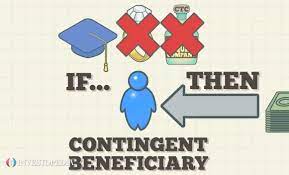When you start working as a freelancer or as an independent contractor for a company, there is always a lot of paperwork to fill out. Most of your individual clients or businesses who will be paying you will require you to fill out a Form W9, as well as a Taxpayer Identification Number (TIN), and Certification. How do you fill out a W9 form for a business or an LLC, either as an individual or a freelancer?
This article you are about to read will provide you with answers to all the potential questions.
What Is Form W9?
Form W9 is one common form that the IRS usually utilizes. It is a one-page tax form that provides the right taxpayer identification number to other individuals, clients or businesses, banks, and financial institutions. A client may request that you fill out and submit a W9 so they can appropriately prepare your 1099-NEC form. This will also make it easy for them to report any payments they make to you at the end of the year and know if you are susceptible to backup withholding or not.
As an independent contractor, you will probably need to send this form to someone who will then send you back a Form 1099. This form 1099 is what you now need to submit to the IRS if you received a total payment of at least $600 from someone this year.
By signing the form, you’re also agreeing to withhold taxes from your earnings as a contractor or freelancer. Employers sometimes withhold a portion of your wages for federal and state income taxes (FICA taxes), especially when you work full time.
This is how it works: the company or client or individual you worked for will use the information you provided on the W9 you sent to them to complete a 1099-MISC. This 1099-MISC is what you will submit to the IRS at the end of the tax year. The form will show a list of all the payments you’ve received from your employer during the year.
In most cases, you’ll be asked to fill out a W9 form before companies or banking institutions start doing business with you. Regardless, if you ever need to produce a W9 form that you can use, you can always find one on the IRS website.
Who Needs to Fill Out a W9 Form?
Generally, it is customary to present or fill out a W9 form for your business when working with an individual or company that may require the submission of information to the IRS. This information may include receiving payment for services you provide as an independent contractor or freelancer, making mortgage monthly repayments, or subscribing to your IRA account.
By using the W9 form, an individual or organization you’re operating with legally obtains some of your personally identifiable information, including your taxpayer identification number (TIN).
You may also need to complete a W9 form on occasions like:
- Certain types of real estate deals
- Purchase or sale of a secured property.
- Cancellation of debts
- Contributions to a retirement plan for an individual (IRA)
How to Fill Out a Form W9
Even though the W9 forms may appear easy to understand for the majority of people, below is the process or guidelines on how it works.
#1. Get the W9 Form from the IRS Website
While you can receive a copy of the form from a client, you can also download the form from the IRS’s website and print it out yourself. However, if you have questions about the fine print, remember you can check with the IRS, your CPA, Enrolled Agent, or other tax professionals.
#2. Enter Your Full Legal Name
Provide your full legal name on line 1 of the form. However, whether you are filing as an individual, sole proprietor, or single-member LLC, it is best to use the name that appears on your individual tax returns and write it in the same way.
#3. Enter Your Business Name
You’ll need to fill out line 2 of the form W9 if you have a different business name. Here, you should enter your business or “disregarded entity” name, if any. For instance, if you’re a sole proprietorship but you want to market yourself under a different name, as such, you’re running your business under some other name. That’s the exact name you’d put in this field. Otherwise, if your company is a partnership, an LLC with several members, a C corporation, or an S corporation, you should use the legal name of your company.
#4. Describe the Organizational Structure of Your Company
After providing your business name, select the appropriate business structure from line 3. For taxation purposes, the IRS needs to have a clear understanding of how you’re classified. Meanwhile, a clear correlation between this and your business’s annual federal tax form should be possible.
Sole proprietor, partnership, C corporation, S corporation, trust/estate, limited liability company, or “other” are all examples of federal tax classifications. Select the proper option that best suits your business.
# 5. Exemptions
In line 4, these boxes are most likely going to be left blank. It is a non-essential field for the vast majority of people and businesses. However, if your business is a corporation, you may have to, so check with your tax accountant before deciding.
#6. Input Your Mailing Address
You should appropriately fill out lines 5 and 6 with your mailing address. This address should be the one you can use if you want to receive vital tax information. Provide your street address, city, state, and zip code. In addition to using this address for your tax return, if you’re working as a freelancer or individual contractor, your customer will also utilize the address as it appears on the W9 to ensure that your 1099-NEC form is prepared correctly. If you’re filling out a W-9 for some other purpose, you can still expect to get a 1099-MISC at this address.
Next is to go to the first section, called Part 1. This involves entering your Taxpayer Identification Number (TIN), which is the most important part of this form. Generally, SSN or EIN are the two most common methods of identifying yourself while applying for a job. It all depends on the structure of your firm.
Because the Internal Revenue Service refers to this section as Part 1, it might make matters even more confusing, but it’s as simple as it sounds. As a business, you must give an employer identification number (EIN) or a Social Security number (SSN) as proof of your company’s tax ID. The IRS, however, prefers using an SSN on the W-9 form.
#8. Find Out if You Need to Sign and Date the Form
Part 2 of the W-9 form is the certification section. This frequently involves requesting you to verify if you are a United States citizen or a resident alien. Likewise, before you can sign form W9, you must testify to the accuracy of all of your information in Section II. The IRS has a zero-tolerance policy when it comes to dishonestly submitting a tax form, and as such, you may be subject to a penalty or jail time if you knowingly omit information or lie on a tax form.
How to Fill Out a W9 Form for an LLC
Normally, to file your LLC taxes appropriately, you will need to fill out a W9 form. Mortgage interest, non-employee income, and debt cancellation are all included in this form. Although the W9 form is quite basic, it can look tricky to fill out if you’re filing for an LLC. But, if you do this appropriately, you and your company can avoid all kinds of tax difficulties or issues.
Due to the fact that the IRS does not recognize LLCs as independent business entities, LLCs can choose to be taxed as a sole proprietorship (a disregarded entity), partnership, or corporation. This means that if you are the lone owner (member) of your LLC, it will be taxed as a disregarded entity.
Choosing to tax a single-member LLC as a disregarded entity means reporting business profits and losses on your individual tax return (known as pass-through taxation). If you receive 1099 for LLC revenue directly, you may still need to fill out a W9 form.
If you’re a C or S corporation, tick the W9 box under the business name and also indicate a C or S next to this box, depending on your corporation type. You can as well use Form 2553 to form an S corporation, which avoids double taxation.
Whether you’re running your LLC as an individual member, a corporation, or a partnership, with the following steps, you can easily fill out or complete form W9 for your business;
Single Member LLC
The Internal Revenue Service views a single-member limited liability company as a disregarded entity for the purposes of federal income taxation. So, an LLC’s sole owner must file taxes in the same manner as a sole proprietor.
- On the first two lines of the form W9, fill out your name and the legal name of your limited liability corporation (LLC). Enter the LLC’s legal name on the second line after the name under which you file your tax returns.
- Input the business location, including the city, state, and zip code of the establishment.
- You should check as an individual/sole proprietor/single-member LLC and not a “limited liability company” because that’s what you’re classified as for tax purposes.
- Next, enter your Social Security number. Utilizing your Social Security Number (SSN) is necessary. The Internal Revenue Service (IRS) also permits you to enter an EIN that you earned as a sole owner.
- Sign the certification and send it to the requester together with the W9 form.
Co-operation or Joint Venture
To fill out the form W9 for corporations and partnerships (LLC), the steps to follow can include
- Enter the LLC’s legal name. This should be as it appears on its tax returns. However, if there is one, you should list the LLC’s secondary name on the second line, “Business Name.”
- Select “Limited Liability Company” from the drop-down menu.
- For a partnership, input “P” on the tax classification line, and for S corporations, you can write “S.”
- Input the business location, such as the city, state, and zip code.
- Enter the LLC’s employer identification number (EIN).
- Make a copy of the W-9 form and send it to the person who requests it.
Each customer for whom a freelancer or contractor has worked must have a W-9 form filled out. So, keep a copy of the W-9 form for your own records just to be on the safe side. If a client does not get their 1099-MISC at the end of the year, you can also use this form to contact them.
How to Fill Out a W9 Form for a Business
Rather than submitting it to the IRS, the W9 is a tax form that you send to other businesses. Suppose your business completes work for a local business; in order to send you a 1099 tax form or to confirm that you or your business don’t need one, the form W9 you fill out provides them with the information they might necessarily need. The good news is that the W9 instructions are simple enough that filling out the boxes doesn’t take too long.
On the form W9, you’ll provide information such as your name, your company name, your taxpayer identification number (TIN), and the structure of your organization. You will also need to indicate any exemptions you may have from certain reporting mandates. Once you’ve completed the W9 form intentionally for your business, then you can simply sign it.
Basic Instruction to Fill Out Form W9 for Your Business
Let’s go with the assumption that your corporation may have provided a local business with $2,800 worth of services last year. In order to file 1099 for the IRS, that company will require a W9 form from your business. You can simply download the W9 form from the IRS website and fill it out for your business in accordance with the instructions. The information requires:
- Your full legal name as it appears on your income tax return.
- If you have a business name different from your name, you will need to provide it.
- Your company’s legal or IRS classification (sole proprietorship, limited liability company, corporation, etc ).
- For sole proprietors, you need to provide your Social Security number or Taxpayer Identification Number (TIN).
- Details clarifying whether or not the money you receive is exempt from backup withholding.
- When it comes to reporting overseas accounts, whether or not you’re exempt from the reporting requirements if your money is deposited outside the United States,
Sign the document once you complete it. However, as a sworn declaration that the information on the W9 for your business is accurate, you should double-check your signature. Failure to do this practically means you committed perjury, which happens to be a crime.
In addition, backup withholding takes out 24 percent, just like the same way an employee’s paycheck withholding for taxes takes place. These might affect income, dividends, rentals, and royalties, as well as compensation for non-employees, but they have no effect on real estate deals. In this case, the company that requests your services would deduct a certain amount from your $2,800 service. As such, the firm will not withdraw your wages if you provide your TIN and certify that you are not subject to backup withholding.
How to Fill Out a W9 Form as a Freelancer
A W9 form is a document that self-employed workers, like a freelancer, who provide services to corporations, need to fill out to keep track of their tax and financial information. Using this form, a sponsoring company can provide the Internal Revenue Service with accurate information about the freelancer as well as a tax identification number.
As an independent contractor or freelancer, the IRS Form W9 is most commonly used with each and every employer. Full-time employees do not need a W9. You need to fill out a W9 form since employers do not withhold taxes from an independent contractor or freelancer.
If you are a freelancer, the below procedure can help you learn how to properly fill out the form W9
#1. Enter Your Name
Using the legal name on your tax return, write or type your entire name.
#2. Enter Your Business Name
Type or write the name of your business, or disregard the entity name.
#3. Decide on Your IRS Classification
Here, please select the appropriate federal tax classification option. As a business entity, you’re probably a sole proprietor, C corporation, S corporation, partnership, trust or estate, limited liability company, or another type of business.
#4. Select Your Exemptions
If you have any exemptions from backup withholding or reporting under the Foreign Account Tax Compliance Act (FATCA), you should enter the correct beneficiary or reporting code under this part. Some companies are excluded from backup withholding when it comes to interest and dividend payments. Nevertheless, you should consult the form instructions to be sure.
#5. Provide Your Street Address
Here, you should write the full street address that you use on your tax return, along with the number, street name, and flat or apartment number. This could be your place of residence or your place of business.
#6. Input the Rest of Your Address
Typically, this includes your city, state, and zip codes. In order for the IRS to connect your 1099 documents as a freelancer to your 1040 form, you must include a matching address on the W9 form you fill out.
#7. Input the Requester Details
In this section, you’ll also need to include the full name and address of the person or firm that requested you to fill out this form. Even though it’s not a requirement, it’s a good idea to write down this information for your own records.
#8. Provide Your Taxpayer Identification Number (TIN) and Complete Part 1
For a freelancer, Part 1 of the W9 form, which deals with your taxpayer identification number, is the next section to fill out. You can do this by entering your business’s TIN number in the appropriate field. As a freelancer, it’s probable that your TIN is your social security number (SSN). Meanwhile, if it were to be a different type of company, your TIN is likely to be your employer identification number (EIN).
An alternative option is to see the form instructions for more information on how to complete the form as an immigrant or a disregarded entity.
#9. Complete Part II to Certify or Authenticate Your W9 Form
The final portion of your W9 form to fill out as a freelancer requires you to affirm, under penalty of perjury, that the information provided is accurate. This signifies that you’re certifying that the information you’ve provided is accurate and that you’ve been truthful throughout the process. To safeguard your legal rights, this part of the form is always critical. By signing your name and the date on the document, you certify that the following statements are true:
- You’ve either written or are waiting to obtain the correct TIN for yourself.
- You don’t have to worry about backup withholding since you’re exempt or have a valid reason not to; maybe the IRS has not informed you of any additional withholding.
- It doesn’t matter if you’re American or not; you are either an American citizen, a resident of the United States, or an alien.
- Maybe you’re a partnership, corporation, firm, or other U.S. entity that was formed or incorporated in the United States under the laws of the United States.
- You have provided on the form the correct FATCA code or codes?
Conclusion
You need to get yourself familiar with the IRS form W9 and how to fill it out if you work as an individual, a freelancer, or a disregarded entity. It allows a client or business you work for as an individual easily obtain your name, address, and Taxpayer Identification Number. It also helps inform individuals if they require backup withholding or need to deduct taxes from their earnings.
This form is not for submission to the Internal Revenue Service. You only need to forward it to employers who request it. Though the W9 form is reasonably straightforward to fill out, double-check your information for accuracy. If you’re having trouble filling out this form however, you might want to consider hiring a tax accountant to guide you through the process.
How to Fill Out a W9 FAQs
What does form W9 appear to be like?
The IRS W-9 is a one-page document with five pages of instructions.
Where can I find form W9?
To fill out a form W9 as a sole proprietor, single-member LLC, or an individual, get one from your client, bank, or other financial institution. A PDF version of it is also available on the IRS website.
What is backup withholding?
Backup withholding is money deducted from your paycheck and remitted to the IRS from income payments. Payers may be obliged to withhold taxes in order for the IRS to receive any unpaid income taxes.
Does an individual need to fill out W9?
Employers who hire an individual as an independent contractor must provide a W9 form for them to fill out before they begin working. However, an individual or “independent contractor” who must fill out a W9 form must have met some particular criteria.
Related Articles
- How to Fill Out a Money Order Correctly: Step by Step Guide
- FREELANCING BUSINESS: 2023 Models and Ideas to consider starting out (+ free tips)
- PRINCIPAL PLACE OF BUSINESS LLC: Definition & Examples
- COI INSURANCE: Meaning & How To Get The Insurance Certificate
- PREAPPROVED VS PREQUALIFIED: What is the Difference?






